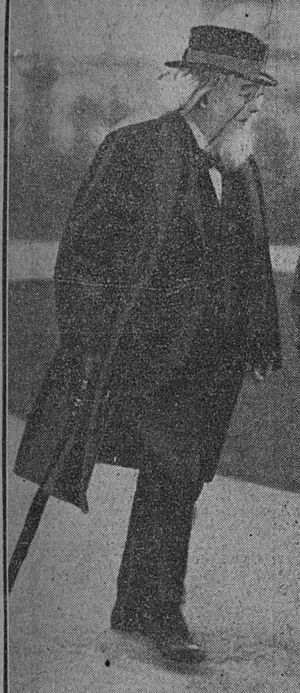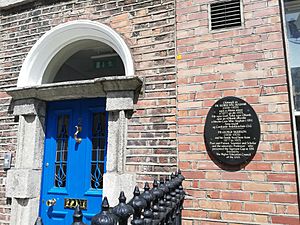George Sigerson facts for kids
George Sigerson (born 11 January 1836 – died 17 February 1925) was an important person from Ireland. He was a doctor, scientist, writer, politician, and poet. He played a big part in the Irish Literary Revival, which was a time when Irish culture, language, and literature became very popular in the late 1800s.
Contents
A Doctor and Scientist
George Sigerson was born in a place called Holy Hill, near Strabane in County Tyrone. His parents were William and Nancy Sigerson. He had three brothers and three sisters. His father sent him to study in France after he attended Letterkenny Academy.
He studied medicine at the Queen's College, Galway, and Queen's College, Cork. He earned his degree in 1859. After that, he went to Paris, France, to learn more from famous doctors like Charcot and Duchenne. Interestingly, Sigmund Freud, who later became very famous, was also studying there at the same time. Sigerson even translated some of Charcot's important medical books into English.
When he came back to Ireland, he started his own medical practice in Dublin. He became a specialist in brain and nerve problems, known as a neurologist. He kept visiting France every year to learn more from Charcot. Some of his patients were well-known people like Maud Gonne, Austin Clarke, and Nora Barnacle. He also taught medicine at the Catholic University of Ireland. Later, he became a professor of zoology (the study of animals) and then botany (the study of plants) at the University College Dublin.
A Champion of Irish Culture
While he was a student, George Sigerson taught himself the Irish language. He also met important Irish figures like Charles Kickham and John O'Leary.
His first book, The Poets and Poetry of Munster, came out in 1860. For many years, he wrote for The Nation, an important Irish newspaper. George Sigerson and his wife, Hester, became key figures in the Gaelic Revival. This movement aimed to bring back Irish language, music, and sports. They often invited artists, thinkers, and Irish patriots to their home in Dublin. Famous guests included W.B. Yeats, Patrick Pearse, and Roger Casement. Sigerson helped start the Feis Ceoil, a big Irish music festival. He was also the President of the National Literary Society from 1893 until he died. His daughter, Dora, was also a poet and involved in the Irish literary revival.
George Sigerson was chosen to be a member of the first Senate of the Irish Free State. The Senate is like a parliament that helps make laws for the country. He even served briefly as its first chairman in December 1922. After he passed away, the Senate paid tribute to him, showing how much they respected him.
Supporter of Gaelic Games
The Sigerson Cup, a major competition for Gaelic Football in Irish universities, is named after him. George Sigerson actually donated his salary from his job at University College Dublin to buy the trophy for this competition. In 2009, he was listed among the "125 Most Influential People In GAA History" by the Sunday Tribune newspaper. The Sigerson Cup was first played for in 1911, and UCD were the first winners.
His Later Years
George Sigerson died at his home in Dublin on 17 February 1925. He was 89 years old. He had been sick for a short time. His wife, Hester Varian, had passed away before him in 1898. She was also a writer, publishing poems, short stories, and a novel. They had four children together. Sadly, three of their children, William, George Patrick, and Dora Maria, also died before their father. Only one of their children, Anna Hester, who was also a writer, lived longer than both her parents.



